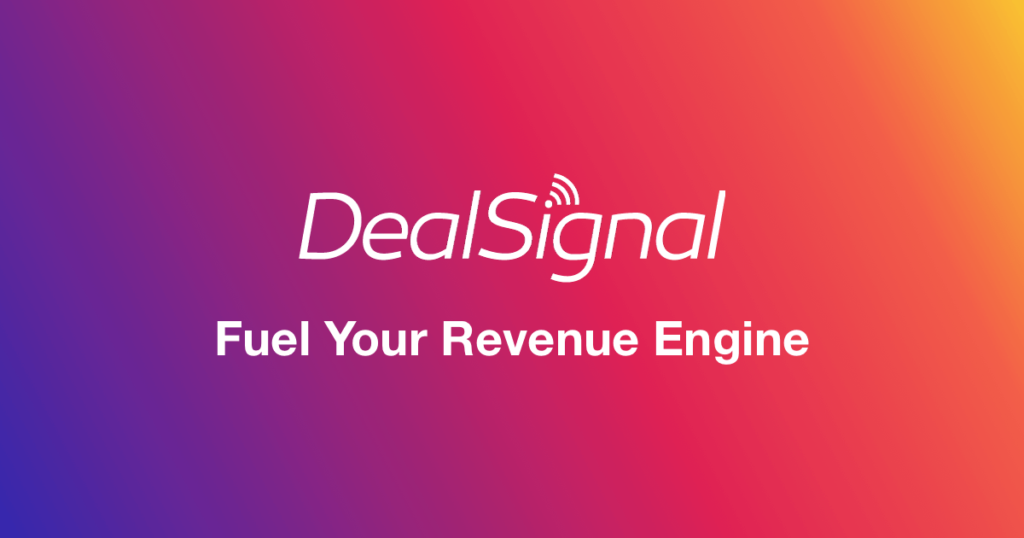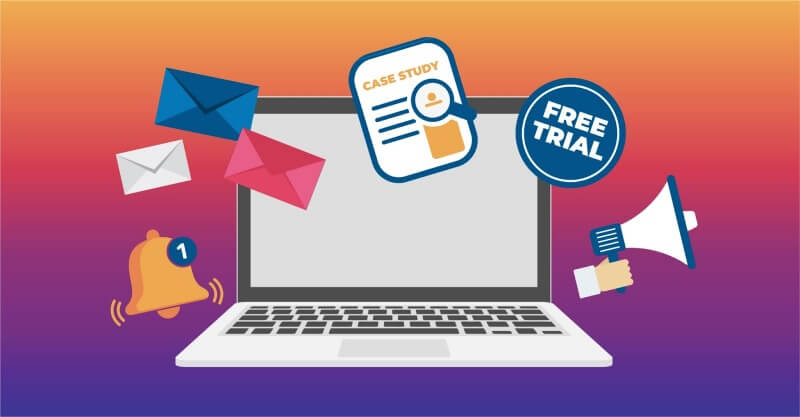- What Is Sales Prospecting?
- Distinguishing Prospects from Leads
- Why Sales Prospecting Is Key for Scaling Sales Practice in 2024
- Challenges of Sales Prospecting
- Top Sales Prospecting Techniques to Take Into 2024
- The Best Sales Prospecting Tools
- Scaling Sales Outreach Without Draining Resources
- Learn more about Sales Prospecting and Performance
What Is Sales Prospecting?
Sales prospecting tools are important in identifying potential buyers (prospects) and then building a business relationship with them.
It’s the first step in the overall sales process—and a very important one. A salesperson who is good at prospecting will create a database full of likely customers. But, note the key word here: likely customers. When sales reps are reaching out to the right people, they can focus on what they do best: relationship building and, of course, selling.
When the sales prospecting process or approach is riddled with weak spots, no amount of outreach will lead to the amount of booked meetings or conversions that you need.
Low-volume vs high-volume prospecting
Volume is one of the most important indicators of successful prospecting.
Teams who rely on manual research and outreach simply won’t be able to keep up with their competition, especially when other companies are using technology to accelerate their process. There’s only so much a person can do in an eight-hour work day—or even a 10, 12, or 14-hour work day.
Manual processes also usually mean that prospecting is ad-hoc with no true system or repeatable process in place. Teams usually face this problem as a result of inadequate resources or out-of-touch management.
On the other hand, sales teams who use the right tools and develop automated sales outreach are not nearly as limited. Instead, they will see drastic growth in their sales pipeline and revenue goals.

Distinguishing Prospects from Leads
It’s crucial to understand that “prospect” and “lead” are not interchangeable terms. While every prospect is indeed a lead for your business, not every lead qualifies as a prospect.
A lead represents any potential customer who has displayed interest in your product or service, whether by subscribing to your newsletter, downloading an ebook, or engaging with your content. However, they may not necessarily align with your current target audience or buyer profile.
Conversely, a prospect denotes a lead that meets your buyer criteria, possesses the necessary purchasing authority, and demonstrates genuine interest in your offerings. These prospects represent the most engaged and qualified leads identified through your sales prospecting efforts. Converting prospects into customers is typically more seamless compared to other leads, as they are primed for your message and offerings. Understanding this distinction is pivotal for refining your sales and marketing strategies to focus on the most promising opportunities.
Why Sales Prospecting Is Key for Scaling Sales Practice in 2024
Sales prospecting is back-breaking work. There’s a lot of pressure to produce a high volume of prospects, and outreach can be difficult because, at this stage of the process, prospects are not yet qualified. A HubSpot study found that more than 40% of sales professionals consider prospecting as the most challenging part of the sales process—even more than closing.
But, there’s no denying that prospecting is a crucial part of the sales process. When you have a database brimming with likely customers, you’re equipped to meet and exceed your revenue goals.
Good sales prospecting can change the playing field, but if you don’t set up your sales team for success, morale can quickly go south—along with productivity, outreach, and, ultimately, conversions.
Read on to learn about the core challenges of sales prospecting and how your team can overcome them.
Challenges of Sales Prospecting
Poorly-targeted audiences
Finding the perfect balance is tricky. Go too broad, and you won’t deliver a compelling message. Go too narrow, and you won’t have enough people to reach out to.
This is disheartening for teams who have engaging, top-quality sales enablement content ready to share. If they have poor targeting, they’re unable to deliver that exceptional content and build new business relationships.
Honing in on your target audience and total addressable market (TAM) is a tough skill to master—but the right tools at your side can make it easier. For example, B2B contact discovery tools can build decision-maker lists within your target accounts for you.
Or, B2B lead enrichment tools with advanced filtering capabilities can go beyond basics like job titles so you can determine whether a prospect is actually a likely buyer. That way, you can better target and prioritize outreach.
Lack of automated systems
If you don’t have a repeatable system in place to truly penetrate your TAM, then you’re destined to struggle from the start.
When you have a manual sales process, there’s a limit to what you can do each day. But when you automate rudimentary tasks or duties you loathe (like research), you can spend more of your time on things that actually move the needle.
Keep in mind, not everything should be automated. Customers want to be treated like humans, and canned emails are a surefire way to make a potential customer feel like just a number and lose interest. Relationship-building is a coveted skill, so you should focus on automating tasks that take away from the time you spend engaging with prospects.
Lean on automation for tasks like lead scoring, lead list building, lead enrichment, web scraping, and CRM data hygiene. These are all time-consuming tasks that can easily be taken off your plate.
Poor quality data
After spending thousands—even millions—on technology and investing hundreds of man-hours to create automation and processes, many teams forge on believing they’ve done everything possible to strengthen their pipeline. According to Gartner, 9 in 10 companies use two or more lead enrichment tools to learn more about prospects.
However, there’s one commonly overlooked piece that has the potential to thwart everything you’ve invested in—and that’s the quality of data your systems are armed with.
Not all B2B contact data is created equal, and there are few platforms out there that can deliver on the accuracy that your pipeline deserves. According to a LinkedIn study, 25% of buyers change job roles every year, and 85% of salespeople have lost or delayed deals because a key stakeholder changed jobs.
You don’t want to waste your time chasing duds, which is why getting the most up-to-date, verified B2B data possible—ideally on-demand—is key to unlocking new opportunities.
Unaligned marketing content
When sales and marketing are aligned, you have a powerhouse. But, that’s often easier said than done. Assess your marketing and sales enablement content and address these questions:
- Does your sales enablement content hit on customer pain points?
- Does it communicate the value of your products or services?
- Is it visually attractive and grabs attention?
- Does it help book more meetings or drive customers down the funnel?
If you answered “no” to any of these questions, it’s time to sync up with marketing and align to drive more revenue.
Pulling all the pieces together
Lastly, the most difficult part sales teams face is putting together all of the above in a coordinated fashion—which is exactly why a leader can make or break a team.
Growth-focused teams need a sales leader who can implement systems to streamline operations, stay accountable, and scale without draining resources or crushing morale.

Top Sales Prospecting Techniques to Take Into 2024
While there isn’t a silver bullet solution to jump from subpar to exceptional prospecting, there are actionable steps you can take to upgrade your approach.
Personalize and give it the human touch
Bring human elements to your sales approach with outreach. Volume is good, but volume with personalization is key.
Consider using video to take a personalized approach and stand out from the crowd. Everyone’s used to receiving written sales emails. A short, personalized video introduction embedded in an email is more likely to capture your prospects’ attention. This also helps your prospects get to know who you are better than a written message would.
If videos aren’t your thing, try including more meaningful CTAs other than “book a demo” or “schedule a meeting.” These are big asks. “Register for our webinar,” “Download this free guide,” or “Listen to the podcast,” are much more enticing offers. This gives an opportunity for your prospect to explore your solution and company on their own and is a much more natural and effective approach to strengthening the business relationship.
Leverage, partner, and get help from your marketing team
Get marketing’s help on content—everything from emails to landing pages, to ebooks, and more. The more educational assets you can offer your prospects, the easier it will be to engage them. This will also position you as an advisor and thought leader.
Additionally, when you leverage your marketing team’s talents, that increased output of content can help trend brand awareness upwards—meaning outreach isn’t always cold.
Ideally, well-executed content marketing campaigns will help produce more hand-raisers, making the prospecting process more efficient.
Implement ABM
Implementing account-based marketing involves several steps to effectively target high-value accounts and tailor your marketing efforts to their specific needs. Here’s a step-by-step guide to help you implement ABM:
Identify target accounts:
- Work closely with your sales team to identify high-value accounts that align with your business goals and have the potential for significant revenue generation.
- Consider factors like company size, industry, location, revenue, and their fit with your product/service offerings.
Research and understand your target accounts:
- Conduct in-depth research on each target account to understand their pain points, challenges, and business objectives.
- Understand their decision-making process, key stakeholders, and any ongoing initiatives your offerings can support.
Create buyer personas for key decision-makers:
- Identify the key decision-makers within each target account.
- Develop detailed buyer personas for each decision-maker, including their roles, responsibilities, pain points, and preferred communication channels.
Develop personalized content:
- Tailor your content and messaging to resonate with each target account and its specific pain points.
- Create content that speaks directly to the challenges faced by key decision-makers within the organization.
Choose appropriate channels:
- Select the most relevant marketing channels to reach your target accounts effectively.
- This could include email campaigns, social media, personalized direct mail, and targeted advertising.
Coordinate marketing and sales efforts:
- Foster close collaboration between your marketing and sales teams.
- Set up regular meetings to share insights, discuss strategies, and ensure both teams are aligned with their efforts towards each target account.
Implement personalized outreach:
- Leverage the insights gained from your research to personalize your outreach to each key decision-maker.
- Send personalized emails, create custom landing pages, and use targeted advertising to engage with them directly.
Measure and analyze results:
- Track the performance of your ABM campaigns to understand their effectiveness.
- Monitor metrics such as engagement rates, conversion rates, and revenue generated from target accounts.
Iterate and optimize:
- Use the data collected to refine your ABM strategies continually.
- Adjust your approach based on what works best for each target account and its decision-makers.
Nurture long-term relationships:
- ABM is not just about one-off campaigns; it’s about building long-term relationships with your target accounts.
- Continue to engage with decision-makers, provide value, and address their evolving needs over time.
ABM is a strategic and personalized approach that requires ongoing effort and adaptability. By focusing on high-value accounts and tailoring your marketing efforts to their specific needs, you can enhance collaboration, increase conversion rates, and make more efficient use of your resources.
Be persistent—it pays off
Consistently follow up and always provide the next steps. As simple as it sounds, it’s easy for sales reps to assume that their prospects know what to do next. Whether you’re asking for a meeting or offering them an educational asset, be clear in your communications.
You’re also unlikely to always catch the right person at the right time, which is why following up multiple times is critical. Unanswered emails don’t always mean a prospect is uninterested—you may have simply caught them while they were in the middle of putting out a work fire, picking up their kids from school, or stuck in back-to-back meetings.
And of course, use your best judgment. Multiple follow-ups over the course of weeks send the message that you’re on top of things. Multiple follow-ups on the same day are overbearing and off-putting.

Boosting Leads in Your Pipeline
It’s undeniable that sales prospecting tool plays a pivotal role in empowering sales representatives to engage with a broader pool of potential buyers, leading to a more robust pipeline.
Sales prospecting tools not only attract well-qualified leads but also streamline the process through automation, enabling reps to efficiently connect with a larger volume of leads within a shorter timeframe. This efficiency not only increases productivity but also enhances the effectiveness of lead-generation efforts, ultimately driving business growth.
Become a thought leader
One of the best ways to become a thought leader (or even ride the coattails of other industry thought leaders) is by getting active on social media. In the past few years, LinkedIn has blown up with thought leaders and B2B influencers consistently posting content.
If you’re not sure what to post, look at your company’s marketing content and see what you can repurpose. Is there an interesting statistic or quote you can use from a recent blog post? It’s easy to overthink what to post, but the important thing is to simply take action and start.
At the same time, engage with other thought leaders in your industry or who are relevant to your target audiences. Offer insights on their posts and engage with them. This will help you get noticed by others and enhance your social media presence.
Also, consider bringing the social elements of in-person meetings, conferences, and trade shows online by hosting a webinar, doing live streams, or open Q&As. When doing this, make sure that the content itself gives your audience a reason to care and provides value.
Start with accurate data
It doesn’t sound exciting, but starting with accurate data is one of the best moves you can make for improving sales prospecting, booked meetings, and conversion rates.
Inaccurate or outdated B2B contact data simply cuts into your selling time because you waste time chasing bogus contacts instead of likely customers.
Also, when you have a large number of contacts to reach out to, your organization is under the impression that you should be booking tons of meetings and winning more deals. But when the accuracy rate of those contacts is low, that’s a very misguided notion that can cause big rifts between departments.
The contact data that enters your CRM should be accurate and up-to-date so you’re not wasting precious selling time. It should also be enriched with all of the details you need to sell effectively—details like company size, revenue, location, and more.
You deal in B2B contact data every day—use the right tech tools to ensure that it’s the accurate, fresh, and verified data you deserve.

Fresh, Global Data. Dynamically Tailored to Your Needs.
That‘s DealSignal.
The Best Sales Prospecting Tools
Sales prospecting is much easier when you’re using the right tools. There are hundreds of tools out there, and we’ve compiled a shortlist of our top picks in each category.
Sales automation and sales engagement
- SalesLoft
- Outreach.io
- Groove Labs
- HubSpot SalesHub
- Yesware
- Sales enablement and sales content
- Seismic
- Highspot
- Sales prospecting data
- LinkedIn Sales Navigator (Best for connecting, networking, and building relationships.)
- DealSignal (Enables multi-channel outreach via email, direct phone, social, and more.)

Scaling Sales Outreach Without Draining Resources
No matter how great your close rate is, at the end of the day, being able to reach out to more qualified prospects means more earning potential. First, you should ask yourself what your revenue goals are and determine the number of contacts you need to work with to reach those goals. Use this free B2B contact quantity calculator to calculate the unique number of contacts you need to hit your goals.
Next, find ways to automate the tasks that take the most time away from sales outreach. As we’ve discussed, for most companies, these tasks include manual research, lead list building, web scraping, and CRM data hygiene.
Take Elementum, for example. Their team used the DealSignal platform and was able to eliminate 10+ hours per week of tedious research, thanks to functions like Contact Discovery, Intent Data-Based Leads, and Inbound Lead Enrichment. This left their sales reps with more time to focus on selling instead of time-consuming legwork. They were also able to increase their TAM by 24x and zero in on their target buyers.
Similarly, FloQast used DealSignal’s lead enrichment tool to provide their sales teams with actionable leads. They were able to reach out to potential buyers with highly personalized messaging without having to do any of the manual research themselves—which meant they were able to move quickly and outpace their competition. They were also able to increase their TAM by trusting DealSignal to provide targeted decision-maker lists, so sales could reach out to more potential buyers.
No matter the size of your team, leveraging focused, targeted automation tools can help you achieve the high-volume outreach you’re after—without draining resources. To see how the DealSignal platform ensures that you’ll always have more than enough high-intent prospects to reach out to, schedule your personalized demo here.
Learn more about Sales Prospecting and Performance
- Hot Leads: The Fastest Way to Convert Interest Into Sales
- Intent Data: How to Generate Quality Sales and Marketing Leads
- B2B Data: Using Quality Data for Better Sales & Marketing Performance
- Sales and Marketing Alignment: Best Practices to Drive Revenue
- 6 Outbound Sales Strategies Fueled by Data
- Tips for Filling Sales Pipeline When Missing Quality Leads
- How Data Accuracy Impacts Sales and Marketing Performance and Costs




